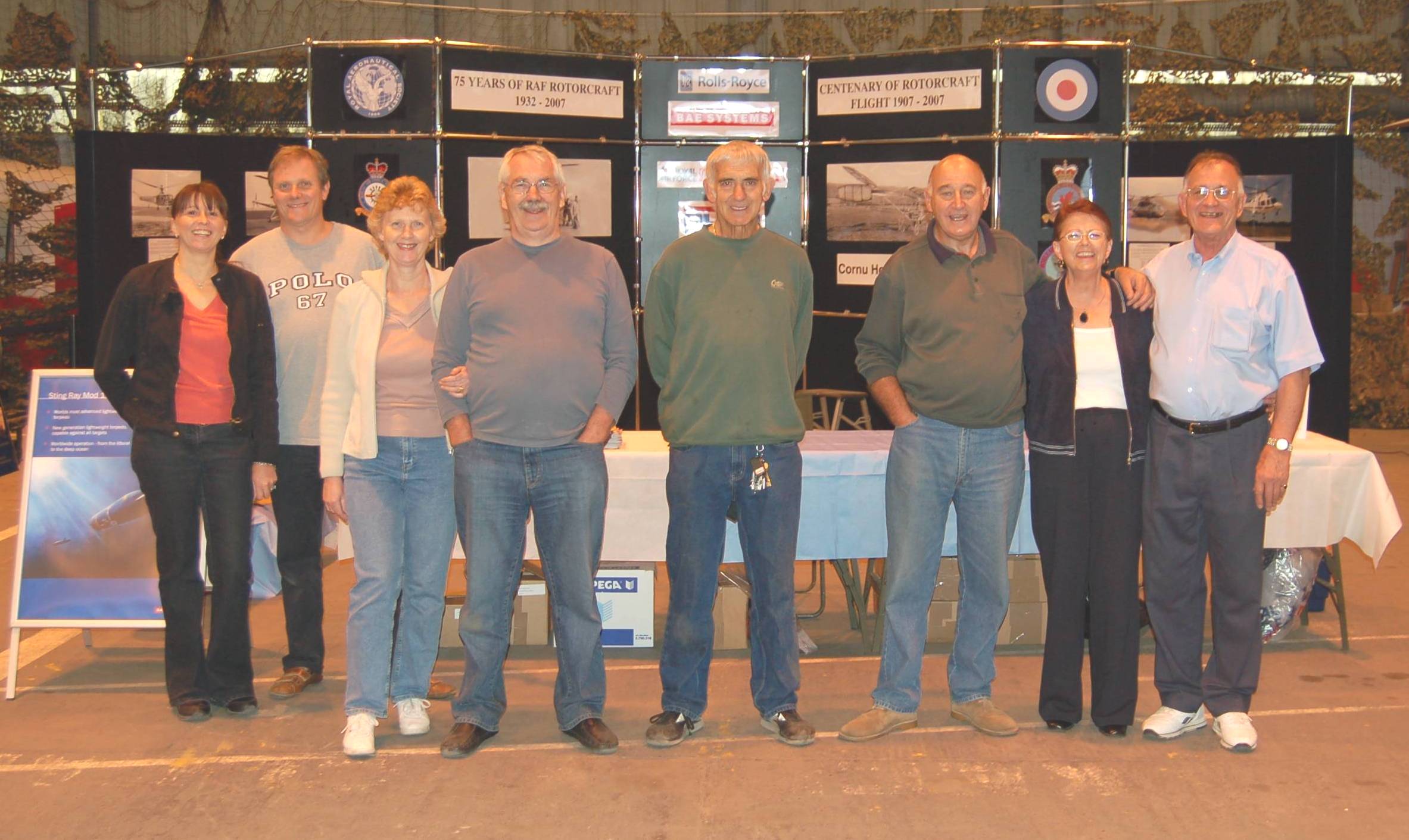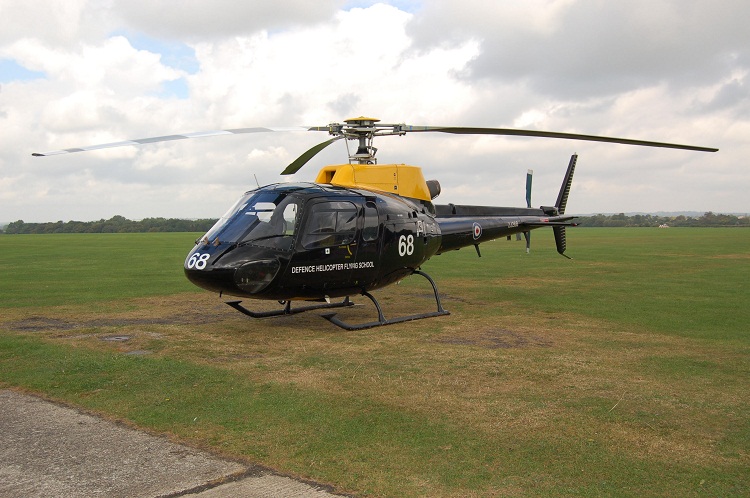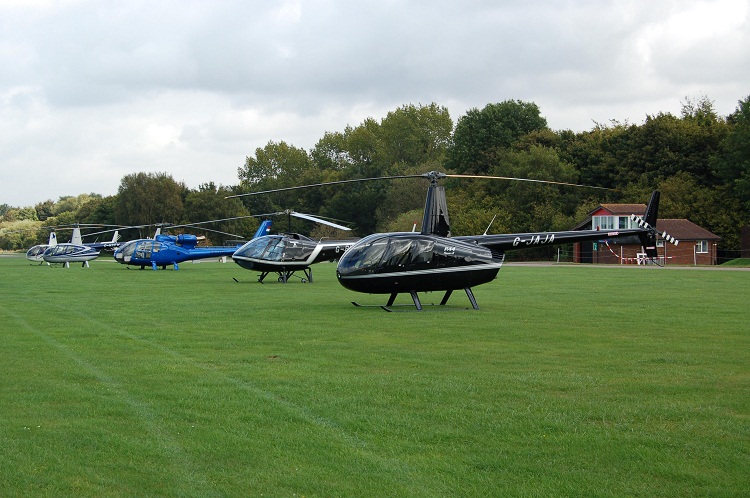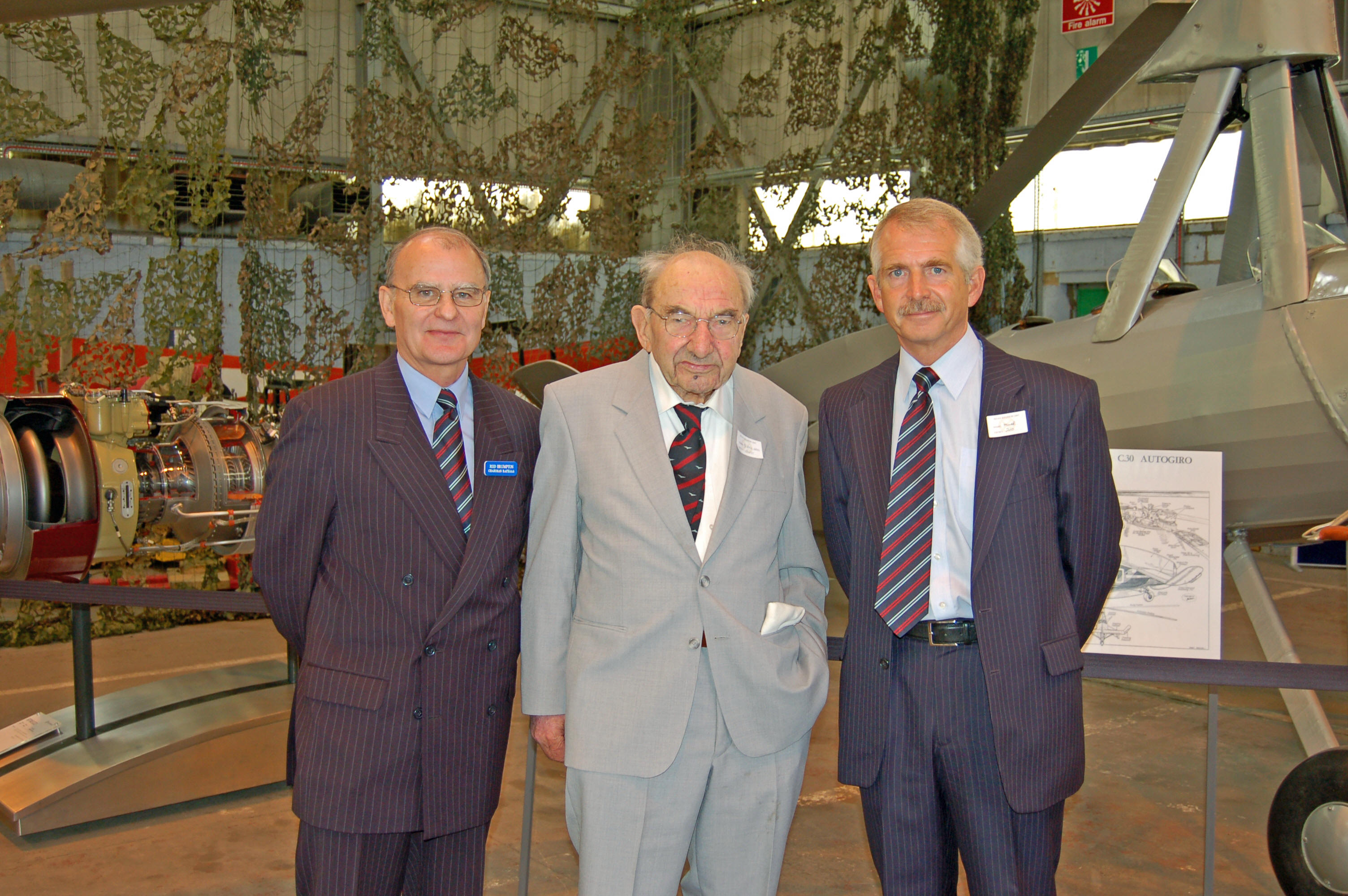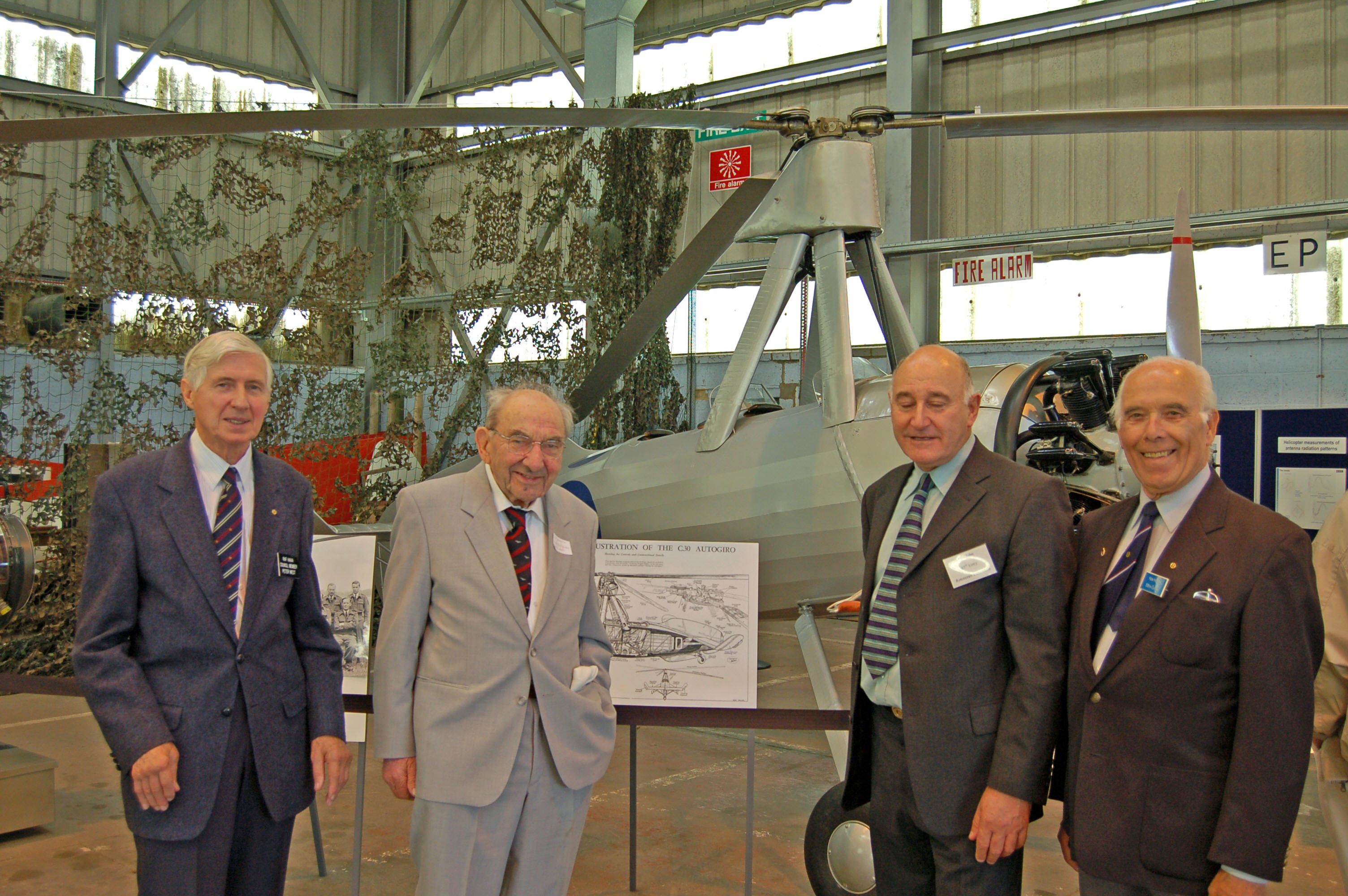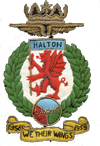
10th RAFHAAA TRIENNIAL & ROTORCRAFT DISPLAY - 2007
THE TRIENNIAL
For the uninitiated, the RAF Halton Aircraft Apprentices Association holds a Reunion at RAF Halton every three years. This event brings together about 1200 ex. Apprentices from many countries around the world and of all ages (from late 30’s to well over 90 years old).
The mild September day included a wide range of activities starting with old friends meeting and greeting in Hangar No.1 at the airfield. Displays this year included an impressive line-up of vintage vehicles, model aircraft flying and the ever present and excellent “Golden Oldies” pipe band. Ah! golden memories for me. This year there was also the Rotorcraft Exhibition and Display put on by members of the 83rd Entry
(See full report below).
Traditional activities are the memorial service and window dedications in St. Georges Church followed by the all important march-up behind the band to Henderson Square for the Sunset Ceremony.
The following are a selection of images from the Triennial taken by Tony Miles (83rd Entry).
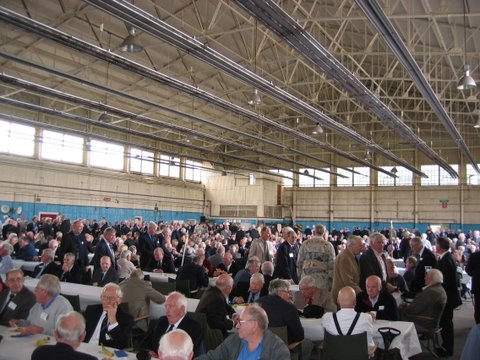
Gathering in Hangar No: 1
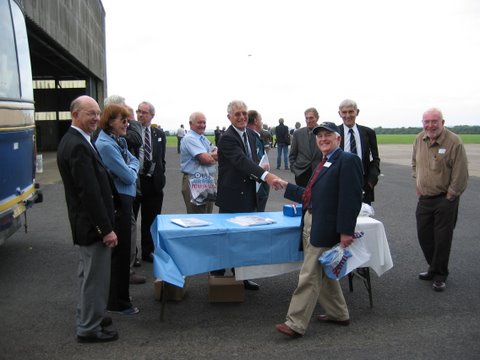
83rd Entry members engaging with potential visitors to the Rotorcraft Exhibition & Display
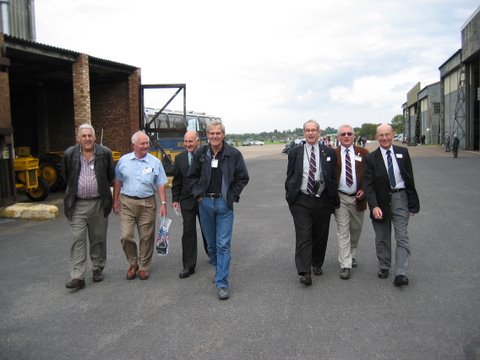
L to R: Dave Smith, Dave Taylor, Ivor John, Chips Woods, Pat O'Shea, Brian Fairclough, Jim Waddington
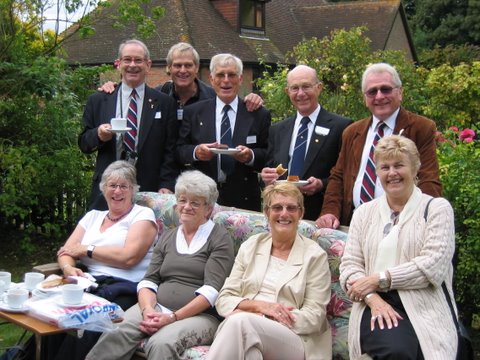
Tea and Cakes in Halton Village
Standing L to R: Pat O'Shea, Chips Woods, Tony Miles, Jim Waddington, Brian Fairclough
Seated L to R: Anne Woods, Margaret John, Pam Miles, Maureen Fairclough
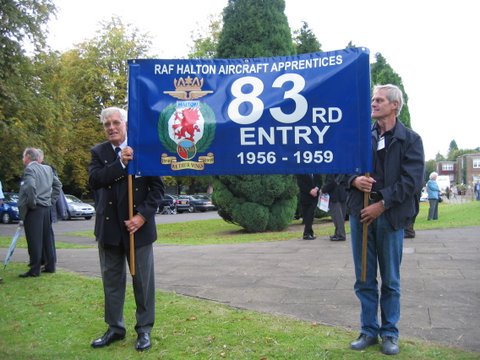
The 83rd Entry Banner in the capable hands of Tony Miles and Chips Woods
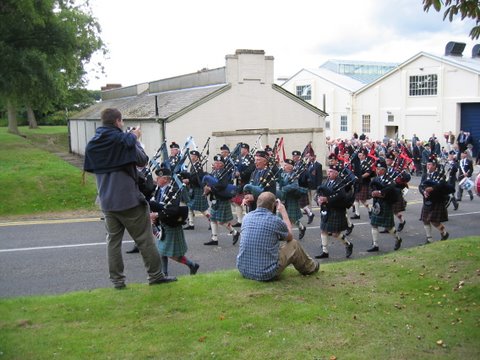
The 'Golden Oldies' Halton Pipe Band
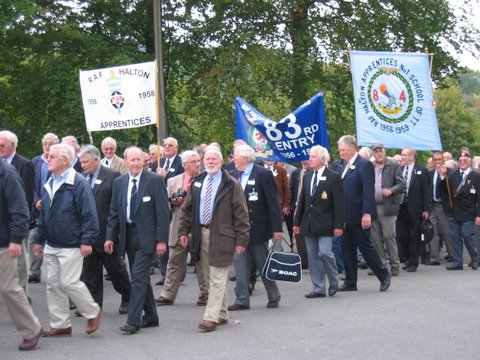
Marching up to Henderson Groves Parade Square for the Sunset Ceremony
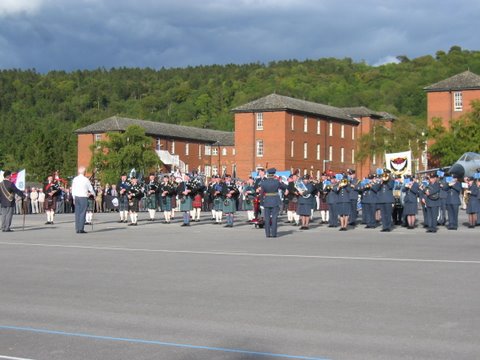
Sunset Ceremony
THE ROTORCRAFT DISPLAY & EXHIBITION
The starting point for the concept of putting on a Rotorcraft Exhibition and Display in conjunction with the 2007 Triennial was a meeting with RAeS Rotorcraft Group colleagues at the Helicopter Museum in Weston-super-Mare on a cold and windy day in March 2006. At that time the Rotorcraft Group was seeking in the UK, ways to acknowledge the Centenary of the first helicopter flight by Paul Cornu which took place in France, in November 1907.
I put forward the idea of exploring opportunities for an event that involved an RAF Station. I knew the RAFHAAA Triennial Reunion was scheduled for September 2007 at RAF Halton so, what about doing something in conjunction with the Triennial? This idea was supported by my RAeS colleagues and coming up with an appropriate event seemed pretty easy and straightforward at the time. Little did I know what was to evolve from that early meeting! Anyway, I did a little a bit of research and started to formulate some ideas and, on paper, it seemed feasible to mount a small rotorcraft exhibition and display.
Just for the record, at the same meeting had I picked up another task and that was to contact Squadron Leader Basil Arkell RAF (Rtd), a retired helicopter test pilot who had been deeply involved in the early years of UK helicopter development. My task was to record Basil’s memories about his test flying years, in particular his experiences with the Fairey Gyrodyne. He set the compound helicopter world speed record with the Gyrodyne back in 1948.
During our first meeting and talking about Basil’s early flying career, wartime service and how he first got involved with rotary wing aircraft, by chance, I discovered that he had served at RAF Halton during World War Two.
After recovering in 1943 from a flying accident whilst engaged on convoy patrols with Coastal Command, flying Avro Ansons, Basil was posted to the “top secret” 529 Squadron to fly Cierva C30A Autogiros doing radar calibration missions around the UK coast. Not only that piece of Halton history came to light because it also transpired that one of Basil’s flying colleagues was Flt Lt George (aka Henry) Ford, an ex Halton Apprentice of the 24th Entry. Things got really interesting from that point on.
At our 50th Anniversary Entry Reunion in June 2006 things really came to a head. The RAF Halton Commandant at that time, Group Captain John Harrison and his lovely wife Pauline joined us at our 50th Anniversary Dinner as guests of honour. John treated us to a very interesting after dinner speech about Halton past and present and the legacy of the Apprentice Scheme that is still very much part of Halton’s ethos today.
A brief conversation with John led to me mentioning my involvement with RAeS plans for the 2007 Rotorcraft Centenary and the fact that the RAF had been involved with rotorcraft for over 75 years. I also alluded to RAF Halton being the operational starting point with 529 Squadron during World War 2 plus the links with Basil Arkell and George Ford (24th Entry). That really got John’s attention and I think his obvious interest in RAF Halton’s history got the better of him because he invited me to write a letter setting out a concept that could be used as part of the Triennial. I did that and John replied saying he fully supported the concept and would pass the task over to Min Larkin and myself to make it happen. Needless to say, a somewhat surprised Min called me up on the telephone a couple of days later to ask me what I had committed us both to and whether we could achieve such an ambitious project. After a brief discussion it was clear to me that Min fully supported the idea but it would be down to me to put together a team to bring it all together.
Having fleshed out the concept a bit more and looked at some of the details including getting sponsorship, helicopter and engine exhibits, etc; I then contacted Ivor John, Jon Philipson and Mike Tuckman to see if they were interested in getting involved with the project. These guys are all ex. Helicopter folks that served at RAF Odiham with me and on various Squadrons elsewhere around the world; they were enthusiastic and wanted to be involved.
So that’s how the initial members of the ‘A’ Team came together. Min also assigned Peter West to be the focal point for the RAFHAAA. Peter was a real gem and took everything in his stride and coordinated the much needed support we would have to seek from the RAFHAAA and RAF Halton.
The "A" Team from left to right after we had finished putting the show together Friday evening – Emma (Janet's daughter), Mike Edwards (Emma's partner), Angela and Jon Philipson, Mike Tuckman, Ivor John, Janet and John Burt.
Early on in the project we were also joined by Petty Officer Baz Ayling RN and his team from RN MASU, Gosport.
Ivor had somehow persuaded RN MASU (subsequently JARTS) to do the historic aircraft movements. Believe me, right from the initial planning phase Baz, who was originally assigned to the task by CPO Colin Bleakly and OC MASU, really did a professional job and the task went like clockwork for the movements from the RAF Museum and return. It was a tight schedule but each run was completed on time and with no problems. It must have been the bacon butties we gave Baz and his team on the return trip. Well done the Royal Navy.
On the Friday and Saturday each aircraft movement in and out of the hangar also came under the watchful scrutiny of Jon Philipson and Mike Tuckman. Talk about tender loving care; those two historic airframes got fussed over like you would never believe. It was just the same when Mike Tuckman took charge of the two engines when they arrived on schedule from Rolls Royce. Real nostalgia stuff!
Mike Edwards, a member of my family had also come on board early on to give us specialist expertise and assistance with the walkthrough exhibition, images and graphics, etc. Mike is Exhibitions Manager at BAE Systems and he, like Baz, were key players in the Team.
Add to these folks our long list of fantastic contacts at AgustaWestland (Alan Vincent, Dave Gibbins (63rd Entry?) and Fred Ballam), BBC Research (Steve Longhurst), BHAB (Peter Norton), DHFS (S/L John Tisbury – 97th Entry), Hayward Aviation (Paul Talbot and Danny White), Helicopter Club of GB members, Joint Helicopter Command (Mandy Barnett and Jo Berry), Peter Kayne Productions, Royal Aeronautical Society (Rotorcraft Group members, Conference Department and Brian Riddle in the Library), RAF Museum at Hendon (Keith Ifould, Richard and Andy Simpson, Ajay and Rebecca, Ian Thirsk, et al), Rolls Royce (Laura Williamson), 22 and 27 Squadrons, No. 1 AIDU (W/O Mark Chapman) and the CO at RAF Northolt to name just the main players. This list gives you a good idea of the excellent resources and great people we worked with to make it a successful event. Everyone was enthusiastic and they gave us their full support to get a good result. It doesn't get much better than that.
We must also say many thanks to Group Captain Richard Gammage, the RAFHAAA President and Station Commander at RAF Halton for the invaluable support we were given by the Station personnel and services. Particularly to Squadron Leader David Rhimes (130th), our RAFHAAA Liaison Officer and his willing band of recruits who helped us to get ready for the show.
I think between Jon Philipson and I we also contacted every RAF, RN and Army helicopter unit to invite them to bring their rotorcraft to the party. They tried to help us out, but unfortunately all our service helicopter squadrons are committed to front line operations in Iraq, Afghanistan and elsewhere. They are at the sharp end as always and desperately short on airframes and crews, but they wished us success all the same.
The panoramic picture below shows how the original concept finally became a reality in No.1 Hangar at RAF Halton on Friday evening, 21st September 2007. Click on image to enlarge.
Looking at the layout above from the left, on a wide screen TV we showed an RAF Rotorcraft History and BBC Aerial calibration DVD that had been well conceived and narrated by Ivor John and expertly produced by Peter Kayne. Next to the mini cinema we had the Pop-up Display and Skeeter helicopter loaned from the RAF Museum. Alongside the helicopter was a cutaway drawing of the Belvedere (now in the Trenchard Museum) and the much revered Gnome engine, loaned to us by Rolls Royce Bristol.
In the middle was the Walkthrough Picture Exhibition (that was a big piece of kit and magic to assemble) showing all the helicopter types flown over the last 75 years by the RAF (these pictures are now being used by the RAF Museum to mount a similar display in the helicopter hall). The front panel had pictures of a Cierva C30 and the Cornu Helicopter plus our sponsor logos.
To one side of the display was a model of the BAE Stingray Torpedo (launched from the Merlin and Lynx helicopters). I still have nightmares about getting stopped by the Police whilst driving on the M25 past Heathrow. How would you ever convince the Police that you are innocent, especially when you have this Torpedo thing in the back of a white Transit van?
To the right is a working model of the latest RTM 322 engine used in the Merlin helicopter, loaned by Rolls Royce. To one side is a photograph of 529 Squadron c1943 and next to that is a cutaway drawing of the Cierva C30 (both in the Trenchard Museum) in front of the real thing, an Avro Rota 1 Autogiro (aka Cierva C30A); also loaned to us by the RAF Museum at Hendon. To the right is the BBC digital TV aerial calibration by helicopter picture board display.
Surrounding the whole display to protect the aircraft exhibits from eager hands we had a smart tension barrier system (pretty heavy kit) that was hired for us by Mike Tuckman and brought all the way down from Cheadle by trailer behind his 4 x 4. Mike also obtained the superb original cutaway drawings of the Belvedere and Cierva C30 from a friend.
Not visible on the display image is the RAF Rotorcraft History Book (123 pages, fully illustrated) that was compiled by me for the event and this was quality printed for the RAFHAAA by No. 1 AIDU at RAF Northolt. Feedback from various people tells me the book was well received and a lot of copies have been distributed.
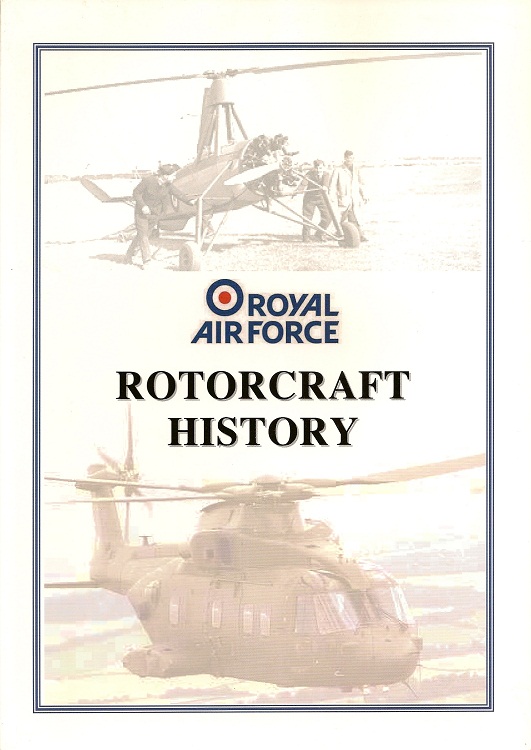
Should anyone wish to obtain one of the RAF Rotorcraft History Books for a small donation (to RAFHAA) plus postage, please get in touch with John Burt (see details under "Contacts" in main menu).
Outside on the “flight line” there was a Static Helicopter Display which included a ‘B’ Flt 22 Squadron SAR Sea King, a DHFS Squirrel and at least 10 civil helicopters including Robinson R22’s, R44’s, Enstroms, Squirrels and a couple of Dauphins. Sadly, a 27 Squadron Chinook that had been promised by JHF had to pull out a couple days before the event (that “big bird” would have opened a few eyes for sure). The aircraft movements were handled expertly by Flt Lt Dave Hill, OC Ops and Jon Philipson.
22 Squadron SAR Sea King
DHFS Squirrel
Some of the Helicopter Club of GB rotorcraft
The icing on the cake was the arrival of Squadron Leader Basil Arkell RAF (Rtd) the last known surviving pilot from the days when 529 Squadron was flying from RAF Halton in 1943. EADS UK had kindly laid on a chauffeur to bring Basil safely from his home in Kent and take him back again on the same day. Many thanks to Tim MacMahon, Emma and Rod the Chauffer for doing a great job.
VIP's – Air Commodore Rod Brumpton (106th) RAFHAAA Chairman, Sqd Ldr Basil Arkell and Air Marshall Sir Dusty Miller (210th) our senior serving member
Standing in front of the Cierva C30 with Basil Arkell are L to R, Peter West (73rd) RAFHAAA Secretary, Ivor John (83rd) and Ken Hewer (58th)
The nice thing on Saturday was our ladies were invited into the airfield after lunch so they could see the exhibition and display before we took it all apart in the evening. I think they were really impressed – not bad eh!
However, the ladies were a bit late arriving because they had been visiting St. Georges's Church to look at (pay homage to?) the colourful and historic Entry stained glass windows which are now almost complete – they are a fantastic sight for anyone to see. Apparently when the ladies arrived at the church, Mark, the son of Steve Bishop (83rd), was playing a recital on the piano and as we all know, Mark's brilliant piano playing just stops you in your tracks. Apparently the ladies decided to just sit in the Church and enjoy the beautiful music. Typical!
The knock-down, pack-up and tidy-up on Saturday went according to plan and slightly ahead of schedule so we were able to get back to the hotel with plenty of time to relax and change before dinner. Mike Tuckman volunteered to stay over a while longer to do the final load with the MASU Team (ready for an early start on Sunday) and he also made it back to the hotel in time for pre-dinner drinks. A job well done.
In the final wash-up meeting after the event we found that so far, we have received just over £400 in donations for the RAF Rotorcraft History book and this will be divided among the charities we are supporting. Several boxes of books have since been taken away by our members and others have been distributed to various museums and organisations so we hope to receive some more donations in the future.
Finally, since the Triennial we have received some nice letters and notes thanking the "A" Team for their hard work in putting on the show. It feels good to be appreciated.
My personal and special thanks go to everyone that gave encouragement, support and help to achieve such a great result, especially my good friends Ivor, Jon and Mike.
